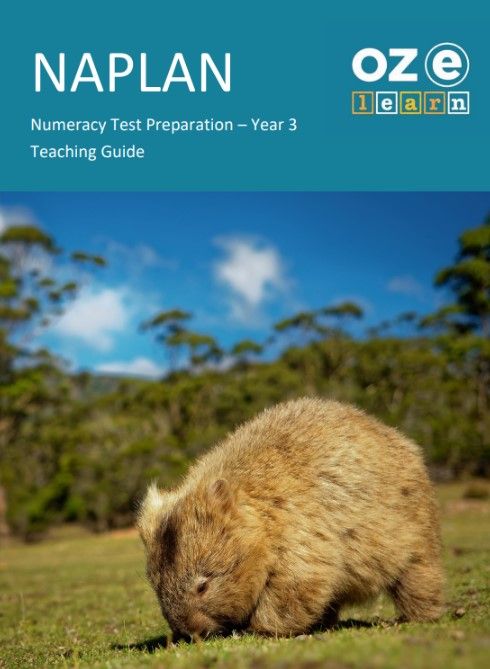NAPLAN Test Preparation: Numeracy – Year 3
Direct Instruction

Teaching Resources
Share this page:
Program Overview
The NAPLAN Year 3 Numeracy program is a program for Year 3 students. It aligns to the Australian Curriculum Mathematics Strand:
- Recognise, model, represent and order numbers to at least 10,000. (ACMNA052)
- Recognise, represent and order numbers to at least tens of thousands. (ACMNA072)
- Model and represent unit fractions including 1/2, 1/4, 1/3, 1/5 and their multiples to a complete whole. (ACMNA058)
- Apply place value to partition, rearrange and regroup numbers to at least 10,000 to assist calculations and solve problems. (ACMNA053)
- Represent and solve problems involving multiplication using efficient mental and written strategies and appropriate digital technologies. (ACMNA057)
- Represent and solve problems involving multiplication using efficient mental and written strategies and appropriate digital technologies. (ACMNA057)
- Explore the connection between addition and subtraction. (ACMNA029)
- Recognise and explain the connection between addition and subtraction. (ACMNA054)
- Recall addition facts for single-digit numbers and related subtraction facts to develop increasingly efficient mental strategies for computation. (ACMNA055)
- Recall multiplication facts of two, three, five and ten and related division facts. (ACMNA056)
- Measure, order and compare objects using familiar metric units of length, mass and capacity. (ACMMG061)
- Represent money values in multiple ways and count the change required for simple transactions to the nearest five cents. (ACMNA059)
- Make models of three-dimensional objects and describe key features. (ACMMG063)
- Describe the features of three-dimensional objects. (ACMMG043)
- Create and interpret simple grid maps to show position and pathways. (ACMMG065)
- Collect data, organise into categories and create displays using lists, tables, picture graphs and simple column graphs, with and without the use of digital technologies. (ACMSP069)
- Interpret and compare data displays. (ACMSP070)
- Identify questions or issues for categorical variables. Identify data sources and plan methods of data collection and recording. (ACMSP068)
- Conduct chance experiments, identify and describe possible outcomes and recognise variation in result. (ACMSP067)
Learning Objectives
In Lessons 1 to 40, students learn about:
- Place Value: 5 and 6-Digit Numbers 1–14
- Money: Value of Groups/Bills and Coins 1–2
- Place Value: Number Comparisons 1–3
- Fraction Analysis 1–7, 25–26
- Number Patterns/Lines 5–16, 20–21
- Division Sign and Word Problems 7–9
- Vocabulary: Product, Sum, Difference 10–14
- Tables 11–20
- Bar Graphs 15–23
- Polygons 15–18
- Comparison of Perimeters 17–20
- Probability 19–23
- Faces, Vertices, Edges 21–31
- Multi-Step Word Problems 22–25, 29–31, 36–38
- Place Value Grids 24–29
- Picture Graphs 24–32
- Circular Thermometer 27–28
- Fraction Number Lines 30–38
- Area: Full Unit/Half Unit 31–37
- Congruence 32–35
- Pattern of Shapes 37–40
- Symmetry 38–40
- Measuring to the Nearest Centimetre.
Success Criteria
- Understand Place Value of numbers up to six digits.
- Calculate with money.
- Understand fractions.
- Interpret, create and analyse graphs.
- Solve addition, subtraction, multiplication and division problems.
- Identify polygons, patterns and symmetry of shapes.
- Measure to the nearest centimetre.
